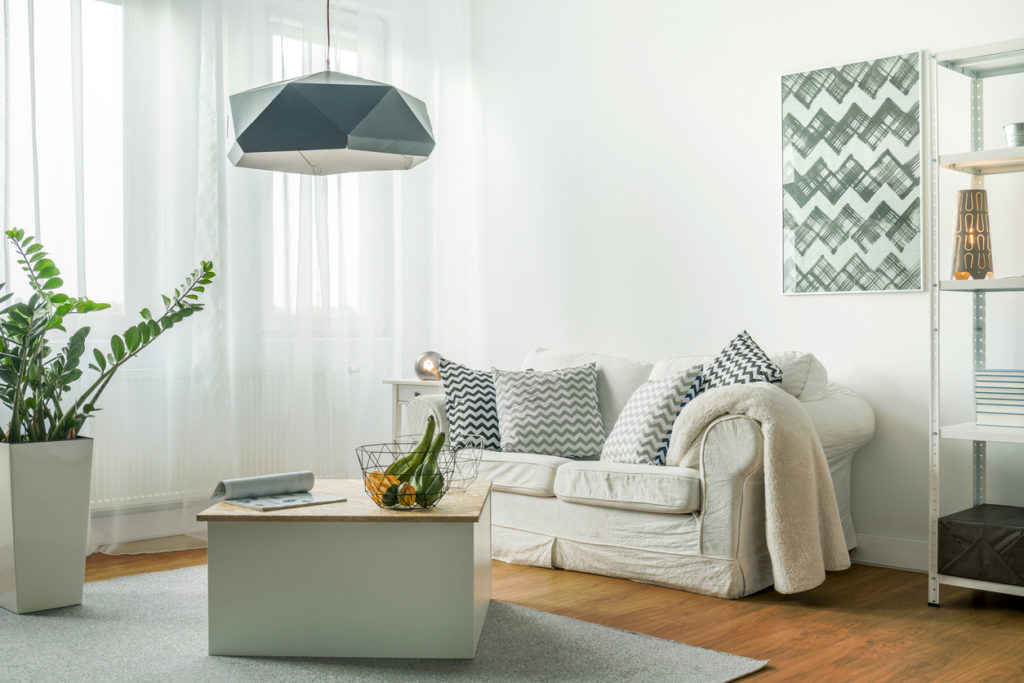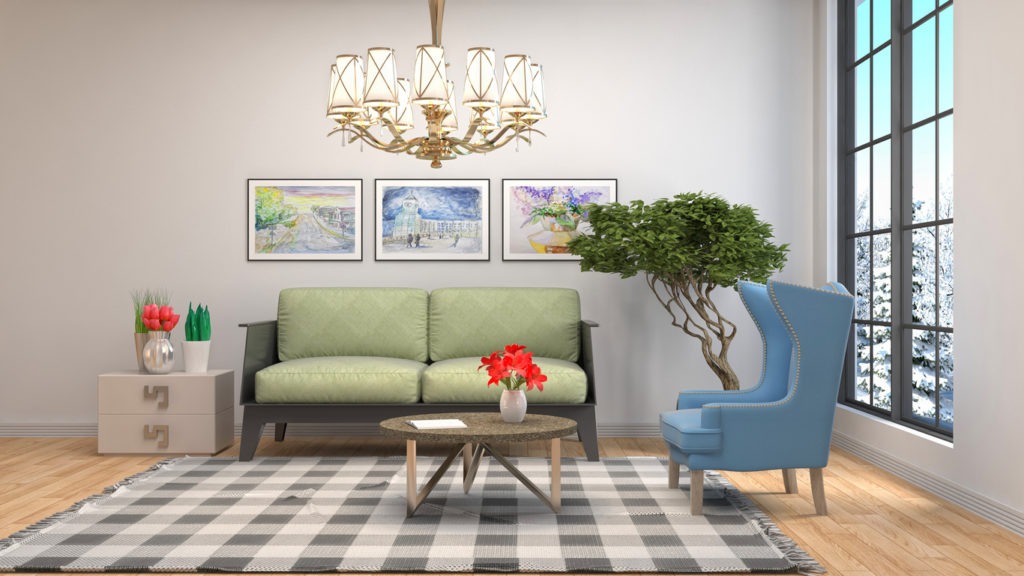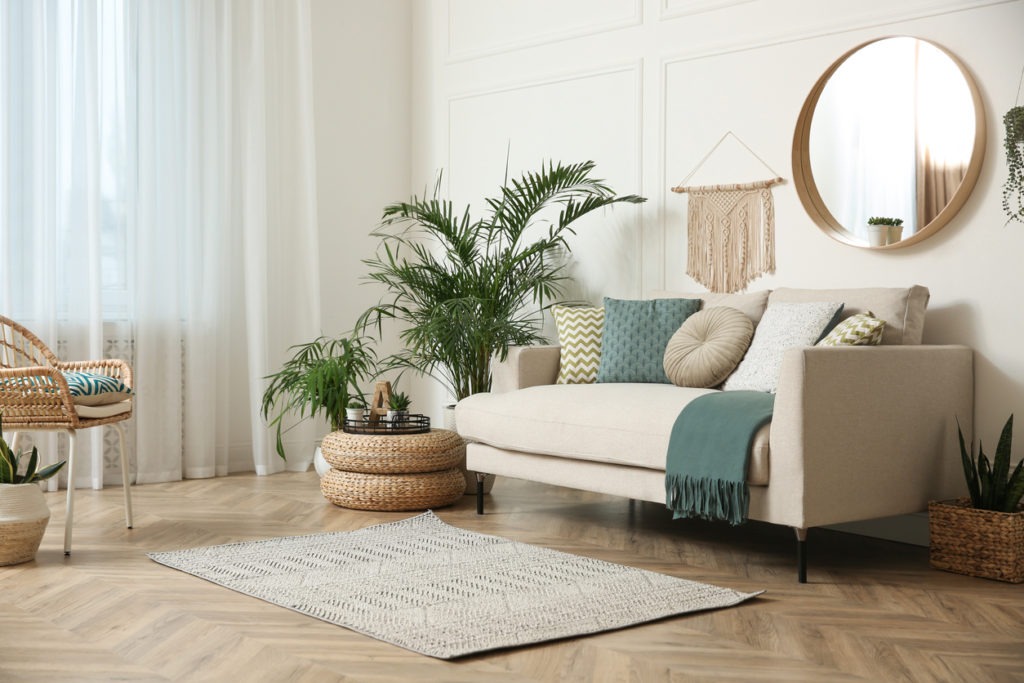More and more people are ‘micro-living’ in urban areas, and this trend can be a challenge on anyone’s ideal home design. However, some smart architectural decisions can give you an idea of how to make the most of your space and reduce clutter. It’s also much less expensive than relocating to a new house.
If you want to make a tiny room seem larger without renovating or tearing down walls, try some of these tricks instead. Mirrors and light-reflective ceiling paint can make a room appear larger than it is. But before you start sprucing up the place, you should start by clearing out the clutter and getting rid of everything that isn’t necessary. If every inch of your little room is crammed with furniture, papers, and trinkets, no amount of interior design tricks can help. After you’ve eliminated any unnecessary items from the area, these design strategies will make the space seem larger.
Tips on Making Your Tiny Room Bigger
1. De-clutter your home
To get anything done, you need to clear the clutter first. This may appear simple, but in practice, it is challenging. Get in touch with yourself by emphasizing cleanliness, order, and minimalism. Once you start clearing out the clutter, you’ll be astonished at how much extra room you’ll have. Having a lot of belongings can make even a moderately sized room feel claustrophobic. Think of creative hiding spots for your collectibles, including under tables or behind closed doors. When things are put away neatly, and out of sight, the visible area is more relaxing and pleasant.
2. You may make a room look higher by painting or wallpapering the ceiling.
Putting wallpaper on the ceiling is a way to make a space seem more expansive since it attracts greater attention. Using accent pieces like the pillows on a chair and the rug on the floor, you can easily tie in the room’s color scheme with your choice of pattern or color. A room with lighter walls and ceiling would feel higher, and your space will look larger. This method is worth a shot because it may make even a room with low ceilings look more spacious.
3. Choose Neutral Color Schemes or Feature Soft, Light Hues
For example, the wall, floor, ceiling, skirting, and furniture upholstery should all be neutral hues. Colors like off-white and beige reflect light and create the impression of more space. If you have a small room, don’t choose dark colors since they will absorb the light and make it look even smaller than it already is. Bold colors can be added with throw pillows or wall art to keep the space from feeling too clinical and sterile. Use soft tones on the woven upholstery fabric, textured wall finish, and curtain fabric to create a harmonious look and feel. Rooms with low ceilings benefit from using cool hues and delicate warm colors on most surfaces. Space may be made to feel either comfortable and intimate with dark, warm colors or open and airy with light, cold hues. Choose muted shades of blue and green for the best impact.
4. Put up a mirror
When positioned opposite a window, mirrors are known to reflect light and brighten up a room. This is especially helpful for making a tiny room with few windows or natural light feel more expansive and airier. One option to create the illusion of more space is to mount a long mirror along one wall. Extra space can be created with the help of a tall rectangular mirror if it is positioned in the right spot. And if your kitchen is tight on space, you may make it seem like there’s a window by putting a mirror behind the sink.
5. Install floating storage or shelving
Furniture need not always be placed on the floor. Floating shelves, cabinets, TVs, and TV consoles can all be mounted on the wall depending on the stability of your walls. Smaller items can be easily hung from rails on the wall, freeing up valuable desk space in a home office. Be careful not to start drilling holes in the wall without finding out what’s behind it. Be mindful of things like wiring, and make sure to get accurate measurements so that you don’t end up with an eyesore.
6. Invest in pieces that can serve multiple purposes
Rather than relying solely on wall space, consider purchasing furniture with several functions, such as storage ottomans or blanket chests. These items are handy for storing items out of sight and can also be used as extra seats for visitors. A nest of tables can replace a bulky coffee table, and a couch bed can serve as a makeshift sleeping area if you lack a spare bedroom. Multifunctional furniture is a great way to maximize limited space.
7. Keep things in balance
Scaling furniture to fit the available area is a way to make the most of your interior design. Mismatched furniture is one of the worst design mistakes you can make. Image a great sofa that takes up so much space that it’s impossible to move around it or a coffee table that’s so long that you constantly hit your legs on it. Try to get sofas and chairs with longer legs so you can see the floor behind them and narrow arms to get more seating area. When more of the ground is visible, a space seems larger. Additionally, a circular table will take up less room than a rectangular one, making it an ideal choice if you’re trying to squeeze a formal meal into a small space.
8. No too thick drapery
If you want to maximize the natural light in a tiny area, don’t use heavy drapes that take up too much visual space. Use sheer curtain materials or movable blinds like slats or rollers to let in natural light. It’s recommended to match the color of the drapes or curtains to the room’s walls. This eliminates visual tension and creates the impression of a more unified space. A home can feel more spacious and inviting if you add a light fixture. If you have wide windows in your home, you may want to consider taking down any drapes or blinds that prevent visitors from seeing into the space. If you get rid of it, your room will be much less cluttered. If you’re concerned about your personal space being invaded, consider installing lightweight mesh curtains with a pole that extends past the window.
9. Put up big paintings instead of little ones
If you have a small space, hanging a large piece of art in the entryway will trick the eye into thinking the area is much larger than it is. Install a showpiece to use the blank space on the wall to your advantage. It may even increase the amount of available light by reflecting daylight. If you select an artwork large enough to hang, you won’t need as many other decorative pieces. Whether it’s a picture, a map, wall decor, or a sign, you can be creative with this suggestion. When you first go into a room, you have a chance to make an impression. Don’t create visual chaos by hanging too much on one wall, whether it’s art or family photos. Instead, have one huge piece of art or frame that serves as a focal point on each wall. As opposed to having a smattering of smaller paintings, this will work splendidly.
1o. Consider purchasing an eye-catching lamp for your home
When placed in a tiny room, a large statement light can serve as a focal point and direct the viewer’s gaze upwards. If you buy a light for your room, you might as well make it count. Also, avoid using floor and table lamps as much as possible in compact spaces. Use only pendant lights and wall sconces to avoid cluttering the floor and other surfaces. The finest piece of advice I’ve had is to use layered lighting. To provide the impression of a larger room, it’s not enough to merely have a light fixture affixed to the ceiling, as with most individuals. A standing lamp, wall scones, or a table lamp can help illuminate the space.
Conclusion
Living in a small space have its pros and cons. For example, in the winter, they make a warm and friendly place for small gatherings of close friends. A smaller house also makes it easier to keep clean. However, when you live in a small house or apartment, it’s hard to find furniture that fits without making things look crowded. So that people don’t feel like they can’t breathe, it’s also important to find ways to make it look like there’s more space than there is.
Whether you choose a small space because it’s more practical or because “minimalism” is all the rage, you can’t argue that it takes work to make a small room look bigger. But don’t think that just because your bedroom is small, it can’t be nice, roomy, and inviting. Simply put, you’ll be very organized and make healthy changes to your life to ensure you don’t stifle your uniqueness. When you have limited space, every detail is important. This helps keep things from feeling cramped and uncomfortable.
You may also use the tips in this article to decorate a cabin. If you want to learn more, you may also read our Guide to Cabin Kits.




